The term xPyT [or "x pole y throw"] generally refers to a switch assembly which has x ganged-together switches, all of which have y active positions, but when x or y would be 1 or 2, the letters "S" and "D" are used instead. Thus, DPDT is two switches each with two active positions.
Generally y will indicate the number of positions to which a switch may be set, even if some or all of the ganged-together switches don't have contacts for all positions, but there are a few notable exceptions:
A switch assembly which has two positions, and one of those positions doesn't connect anything, will be referred to as "ST" [single throw] if the switch will stay put in either the connected or unconnected position, "NO" [normally open] if it is spring-loaded to the open state, or "NC" if it is spring-loaded to the closed state.
It's common for switch assemblies to have two positions that close contacts, and a stable center position which doesn't close anything. Such a switch assembly with e.g. two switches would be referred to as "DPDT center off".
While most switch assemblies fit the xPyT nomenclature or one of the two patterns above, some do not. Some contacts may be missing, and some combinations of contacts may be permanently wired together. A few combinations have special names. For example, the term "reversal switch" [or, in residential lighting, "four-way switch"] is often used to describe a DPDT switch assembly where the upper contact for one switch is connected to the lower contact for the other and vice versa. Some other combinations may be easily described as being a like a xPyT switch assembly but with some changes (e.g. a "3P3T switch with no connections for a far-left "off" position, or a "12PST" switch assembly where all of the switches have one contact in common. If an assembly deviates too much from any "normal" pattern, however, a schematic may be the clearest way of describing it.
